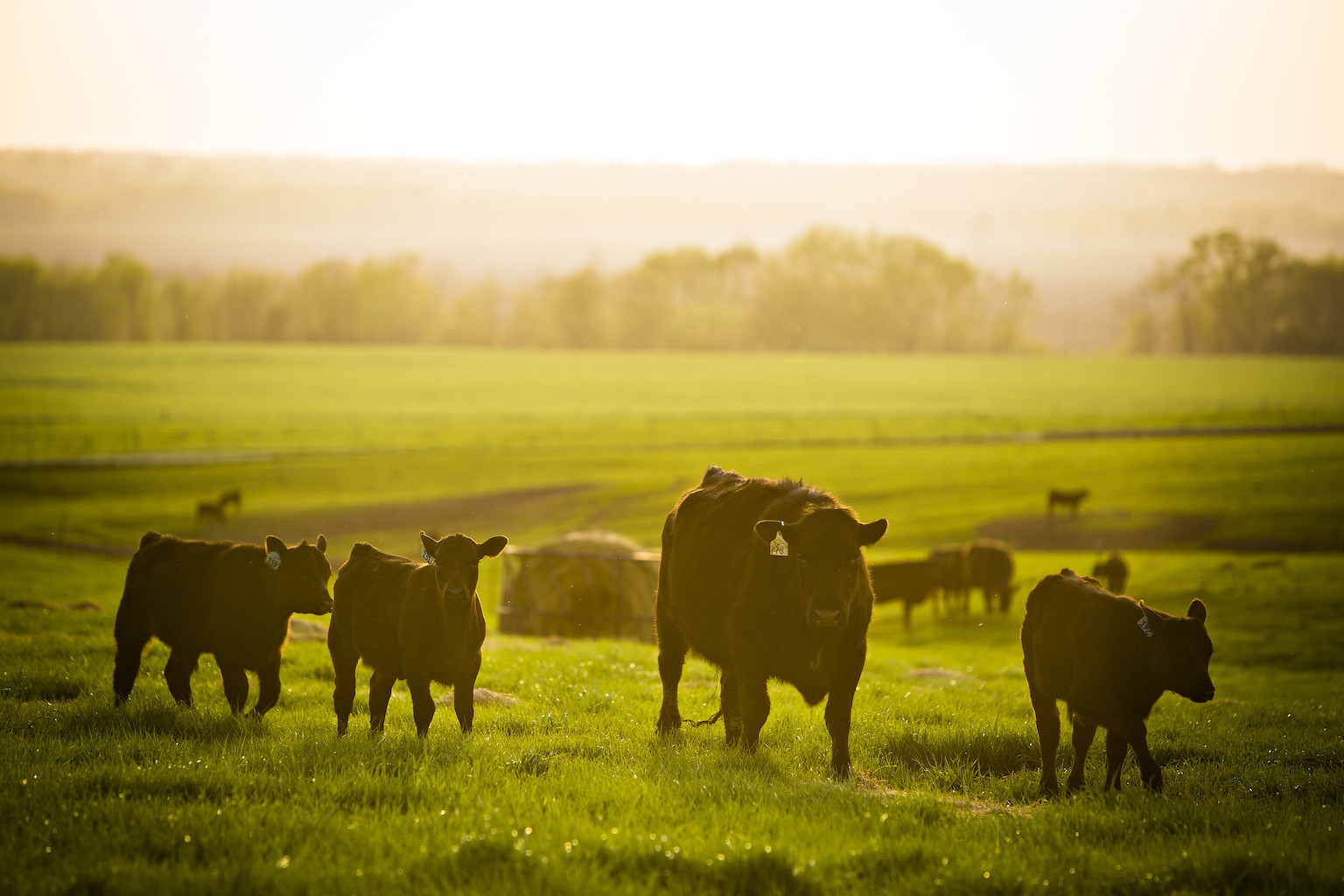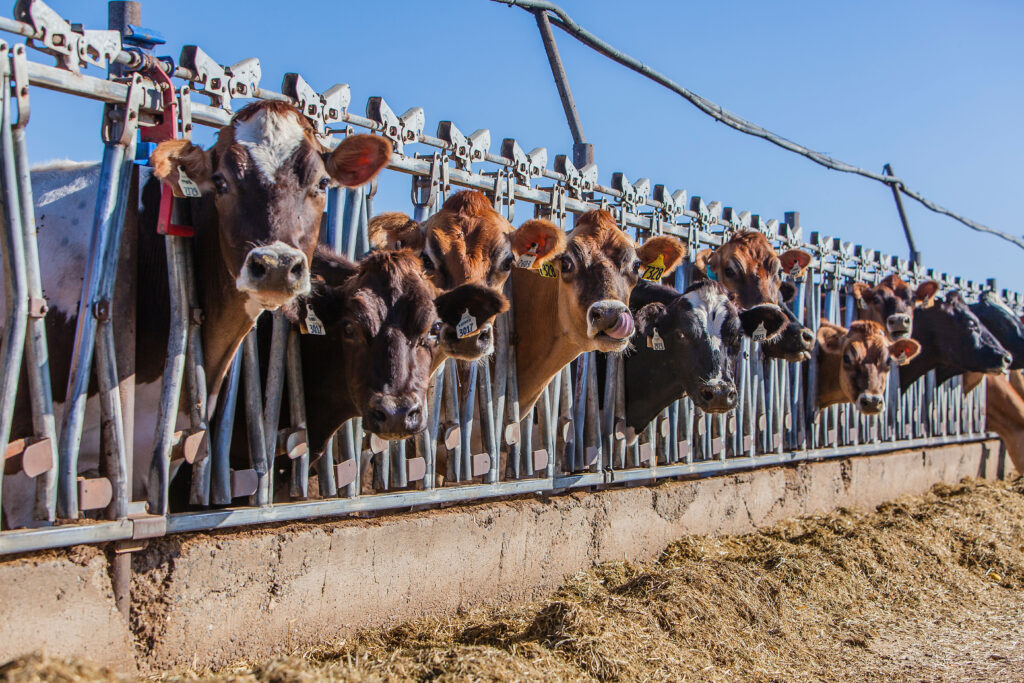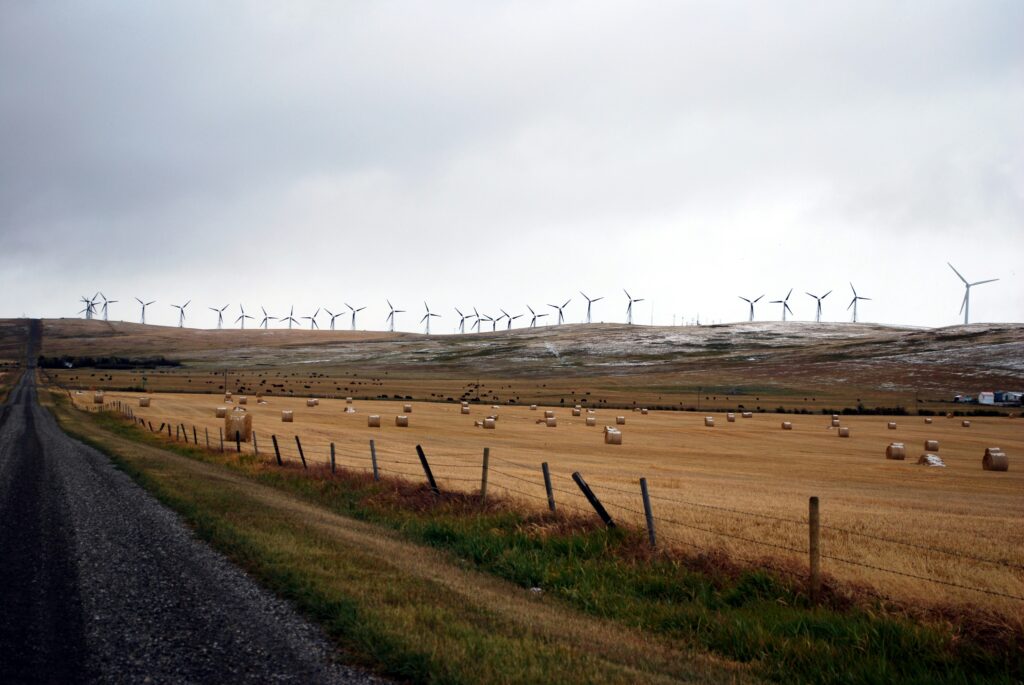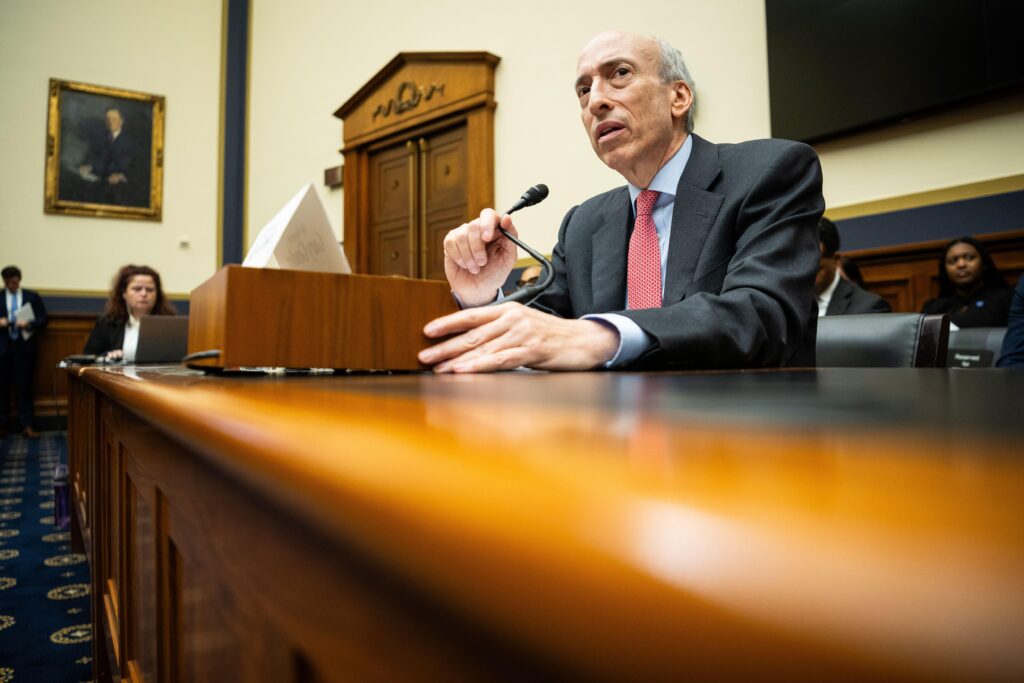A recent study has found it is currently “not feasible” for the global livestock industry to sequester enough carbon to cancel out its planet-warming emissions — and that policy efforts geared toward that goal may be deeply misguided.
The study, which was published in the journal Nature Communications, shows that 135 gigatons — or 135 billion metric tons — of carbon would need to be returned to soils to balance out the amount of methane emitted annually by ruminants like cattle, sheep, bison, and goats. That would be an unthinkable task, said Peter Smith, a co-author of the study and Chair of Plant and Soil Science at the University of Aberdeen in the United Kingdom. 135 gigatons is roughly equal to all the carbon lost due to agriculture over the past 12,000 years. We could completely rewild much of the planet and still not quite get there.
“It’s a nail in the coffin for the suggestion that carbon sequestration can offset the methane emissions” of livestock, Smith said. “The overblown claims by the livestock industry, that you don’t need to worry about anything because we’re sucking up all carbon, we’re doing a climate-positive job — that’s just bullshit.”
About 30 percent of global methane emissions come from ruminants, which belch large volumes of the potent greenhouse gas as part of their digestive process. Each year, a single cow can burp up more than 200 pounds of methane, which warms the planet about 27 times faster than carbon dioxide. At the same time, the nitrous oxide ruminants emit through their manure has 273 times the warming potential of CO2. Estimates suggest there are 1.5 billion cattle on Earth — to say nothing of sheep, bison, and goats — and these emissions contribute powerfully to global climate change. Studies show that failing to reduce them could break our ability to hit the all-important 2-degree Celsius threshold outlined in the Paris Agreement.
And yet, in recent years, a vocal mix of agribusiness interests, advocacy groups, and media commentators has suggested that ruminants might actually be misunderstood climate heroes. That’s because, despite their sky-high methane emissions, they also have a beneficial characteristic: when properly managed, their grazing activities and nutrient-rich manure deposits help encourage plants to sequester more carbon safely in the soil.
The livestock sector and its allies have run with this framing. An informational website managed by the National Cattlemen’s Beef Association and the Cattlemen’s Beef Board, two industry groups, claims that grazing systems “can reduce the carbon footprint of beef and contribute to the reversal of global climate change.” A website post from the Animal Agriculture Alliance, a nonprofit advocating for the livestock industry, similarly states that “Cattle play an irreplaceable role in the natural sequestration of carbon from the atmosphere. Instead of scapegoating the beef and dairy communities for climate change, we should be encouraging farmers and ranchers and providing access to the information they need to continue implementing these climate-friendly practices.”
It’s not just big business. Similar claims are also coming from grassroots groups and food systems reformers. Sustainable ranching advocates have helped to popularize a pithy slogan — “it’s not the cow, it’s the how” — that suggests beef production isn’t an inherent climate liability, with impacts mostly determined by management practices. In a YouTube documentary seeking to “break the thinking that cows are the problem,” Finian Makepeace, co-founder of the sustainable farming nonprofit Kiss the Ground, suggests that sustainable grazing practices could one day “completely negate all CO2 emissions.”
The Nature study offers a damning counterpoint: The amount of carbon we’d need to return to the soil to make up for current ruminant livestock emissions is staggering. To counterbalance the powerful warming impact of all that methane and nitrous oxide, the co-authors found that soil carbon stocks would need to increase by 25 to 2,000 percent, depending on the region.
That’s a tall order, to put it mildly. In 2015, at COP21, the French Ministry of Agriculture proposed a “4 per 1000” initiative to increase soil organic carbon by a much smaller amount — a mere 0.4 percent per year — over the course of 20 years. But even that comparatively more modest goal appears to be beyond reach. A 2018 study in Global Change Biology, for instance, found that the initiative was “impractical for farmers” in many regions, and “unrealistic” as a broader climate mitigation strategy.
If ruminant agriculture was really going to offset its emissions, farmers would need to hit far more ambitious benchmarks. North American ranchers would need to more than double the amount of soil carbon in their pastures, according to the Nature Communications study. Other regions fared even worse in the analysis. South Asia, a region with relatively high soil carbon sequestration potential, would need to increase pastureland carbon stocks more than tenfold to cancel out the warming impact of its ruminants.
The proposed target of 0.4 percent has been criticized for being “overly ambitious,” Smith said, but fully offsetting current ruminant emissions through soil carbon would be “two orders of magnitude bigger” than that.
“The amount of change in soil carbon that would be required to sustain and mitigate the emissions from ruminant agriculture is implausibly large.”
– Danny Cullenward
That’s not to say that any use of cattle in agriculture is inherently problematic. Research has convincingly demonstrated that integrating ruminants into pastures and croplands really can help to sequester more CO2 in some circumstances. “Study after study after study after study has shown that one of very few agricultural systems that sequester carbon are pasturelands,” said Nicole Tautges, director of the Agroecology Program at the Michael Fields Agricultural Institute in East Troy, Wisconsin.
However, as herds become more dense, methane and nitrous oxide emissions can quickly override the potential climate benefits. As Waginen University’s Corina E. van Middelaar, a co-author on the study, put it, “the emissions that you get from having more animals on that plot of land outweigh the additional carbon sequestration.”
According to the Nature analysis, even the most ideal conditions can only support about one cow per hectare of land, about the average density of grazing animals in Europe. That figure was reached assuming cattle emit less than 100 pounds of methane annually on land with abundant carbon storage potential, conditions that “actually hardly exist,” van Middelaar said. The real world is likely to be much more unforgiving, with higher-emitting animals often raised on land with lower sequestration capacity.
To make matters worse, it’s believed that most farmland can only store a finite amount of carbon — meaning even very well-managed pastures can max out their sequestration potential over time. At the same time, bad management decisions, like allowing cattle to overgraze or compact soil too much with their hooves, can easily reverse those gains.
The inevitable conclusion, van Middelaar said, is that “we should move to systems with less animals to begin with.” Raising fewer ruminants would make it more possible to bring methane emissions and soil carbon levels into better balance, Smith said.
Danny Cullenward, a climate economist who is currently a senior fellow at the University of Pennsylvania’s Kleinman Center for Energy Policy, studies the interplay between climate science and policy systems. He said that a full-scale offsetting of ruminant industry emissions would be difficult to achieve even if a much smaller amount of sequestration was needed, given scientific uncertainties as well as political and economic challenges. But this study has placed the issue in much starker light, in his view. He likened it to a “record scratch” — an abrupt interruption, enough to bring surrounding conversations to a halt.
“What it very clearly establishes is that the amount of change in soil carbon that would be required to sustain and mitigate the emissions from ruminant agriculture is implausibly large, before we even get any questions of whether or not you can do it,” he said. “It’s so big that you should never listen to anybody making the argument that the soil side of this will solve the ruminant side of this. There’s just a big disconnect.”
Subscribe to our newsletter
Stay up to date with DeSmog news and alerts






